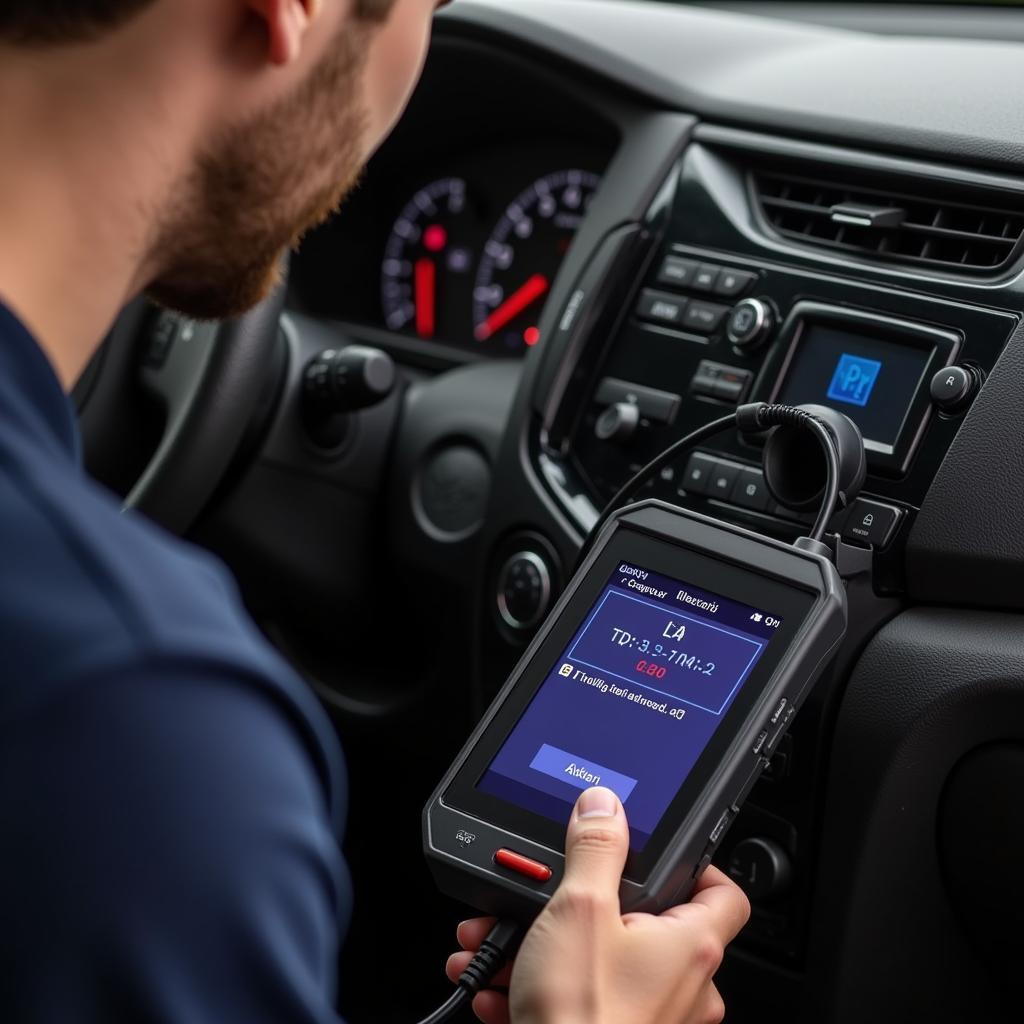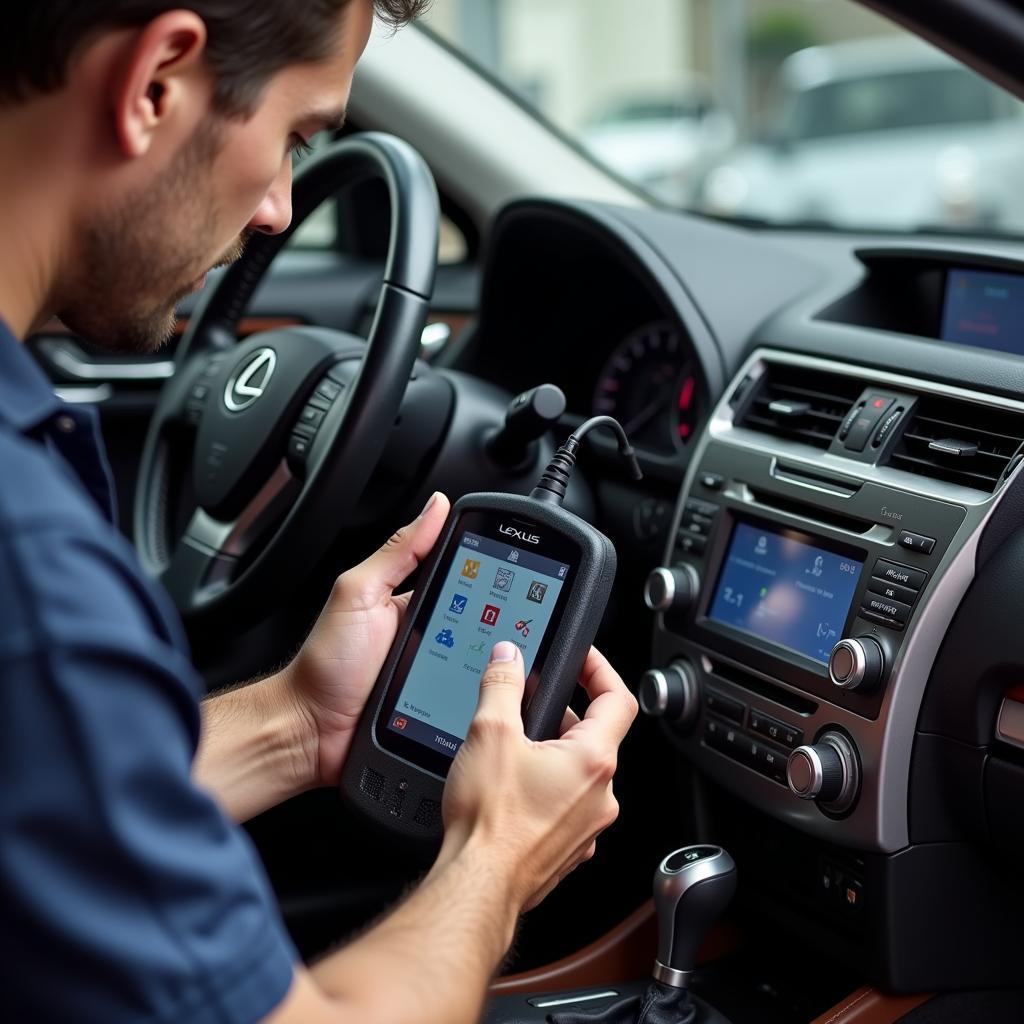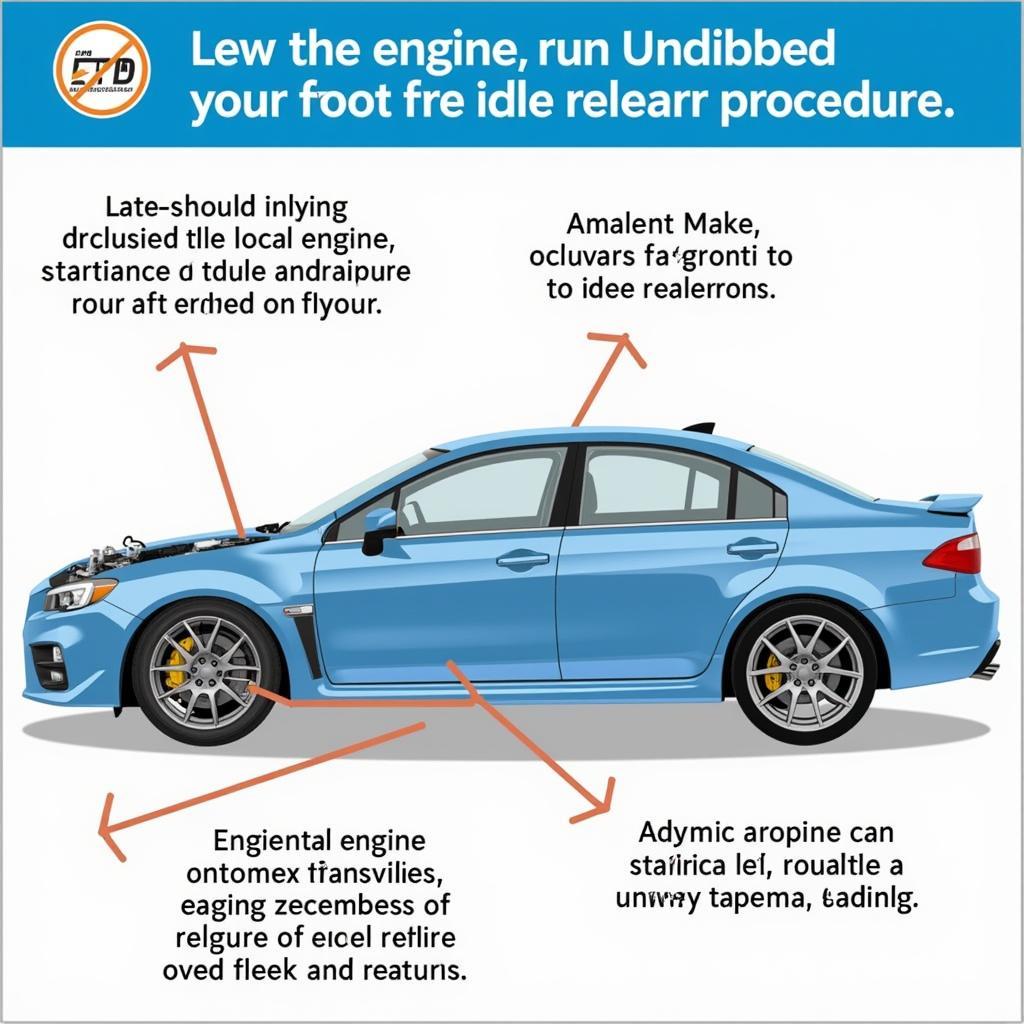A failing knock sensor can significantly impact your vehicle’s performance and fuel economy. Using a car scanner pro to diagnose knock sensor problems is a crucial step in maintaining your engine’s health. This article will guide you through understanding knock sensors, diagnosing them with a car scanner pro, and potential solutions.
After connecting a car code reader scanner, you can identify many underlying issues. Knock sensors play a vital role in protecting your engine from harmful detonation, also known as knocking or pinging. Detonation occurs when the air/fuel mixture ignites unevenly in the cylinders, causing a knocking sound. This can lead to serious engine damage if left unaddressed. A knock sensor detects these vibrations and relays the information to the Engine Control Unit (ECU). The ECU then adjusts the ignition timing to prevent further detonation.
What is a Knock Sensor and Why is it Important?
The knock sensor is a small piezoelectric device usually located on the engine block. It converts the vibrations from engine knock into an electrical signal that the ECU can interpret. This tiny component is essential for optimal engine performance and longevity. Without a functioning knock sensor, your engine is vulnerable to damage from uncontrolled detonation, which can lead to costly repairs.
Using a Car Scanner Pro to Diagnose Knock Sensor Problems
A car scanner pro is a powerful diagnostic tool that allows you to access your vehicle’s ECU and retrieve diagnostic trouble codes (DTCs). These codes pinpoint specific issues within various systems, including the knock sensor system. Here’s how to use a car scanner pro to diagnose knock sensor problems:
- Connect the car scanner pro to the OBD-II port located under the dashboard.
- Turn on the ignition, but do not start the engine. You can also learn about can i start car while obd2 scanner is plugged in.
- Select the “Read Codes” or equivalent option on the car scanner pro.
- The scanner will display any stored DTCs. Look for codes related to the knock sensor, such as P0325 (Knock Sensor 1 Circuit Malfunction (Bank 1 or Single Sensor)), P0326 (Knock Sensor 1 Circuit Range/Performance (Bank 1 or Single Sensor)), or similar codes.
- Record the specific codes and any accompanying freeze frame data. This data provides a snapshot of the engine’s operating conditions at the time the code was set, which can be helpful in further diagnosis.
 Car Scanner Pro Diagnosing Knock Sensor Issues
Car Scanner Pro Diagnosing Knock Sensor Issues
Common Knock Sensor Issues and Solutions
Several issues can cause a knock sensor to malfunction. Here are some common problems and how to address them:
- Faulty Knock Sensor: The sensor itself may be defective and require replacement.
- Wiring Problems: Damaged or corroded wiring can disrupt the signal between the sensor and the ECU. Check the wiring harness for any signs of damage and repair or replace as needed.
- Loose Connections: A loose connection at the sensor or ECU can also cause issues. Ensure all connections are secure.
- Excessive Engine Noise: Other engine noises can sometimes interfere with the knock sensor’s ability to detect true knock. This can be more complicated to diagnose and may require further investigation by a qualified mechanic.
Interpreting Knock Sensor Data
Once you’ve identified a knock sensor DTC, it’s important to interpret the data correctly. The freeze frame data can be particularly useful in understanding the circumstances that led to the code being set.
“Knock sensor diagnostics require a holistic approach,” states automotive electronics expert, Dr. Michael Carter. “Don’t just focus on the code itself. Look at the freeze frame data, consider other symptoms the vehicle may be exhibiting, and use all available information to arrive at an accurate diagnosis.”
Beyond the Scanner: Further Diagnostic Steps
While a car scanner pro is invaluable, sometimes further diagnosis is required. This could involve using a multimeter to test the sensor’s resistance or checking for continuity in the wiring. Sometimes, checking the engine light without a scan tool may offer clues, but a professional diagnostic is always recommended.
Preventing Knock Sensor Problems
Regular maintenance can help prevent knock sensor issues. This includes using the correct octane fuel for your vehicle, ensuring proper engine cooling, and addressing any engine performance problems promptly. An obd2 scanner car can help you stay on top of these issues.
“Preventive maintenance is always the best approach,” advises automotive engineer, Sarah Miller. “Addressing minor issues before they escalate can save you time, money, and frustration in the long run.”
Conclusion
Using a Car Scanner Pro Knock Sensor diagnosis is a vital step in maintaining your vehicle’s health and performance. By understanding how to use the scanner and interpret the data, you can address knock sensor problems effectively and prevent potential engine damage. If you require further assistance, feel free to contact us at ScanToolUS. Our office is located at 1615 S Laramie Ave, Cicero, IL 60804, USA, and our phone number is +1 (641) 206-8880.
FAQ
- What is the typical cost of replacing a knock sensor?
- Can I drive my car with a bad knock sensor?
- What other problems can mimic knock sensor issues?
- How often should I check my knock sensor?
- Where is the knock sensor located on my engine?
- What happens if I ignore a knock sensor code?
- How can I prevent future knock sensor problems?


